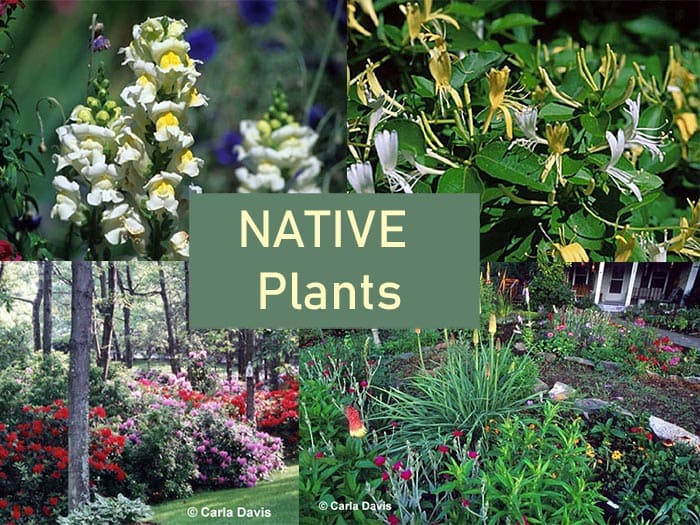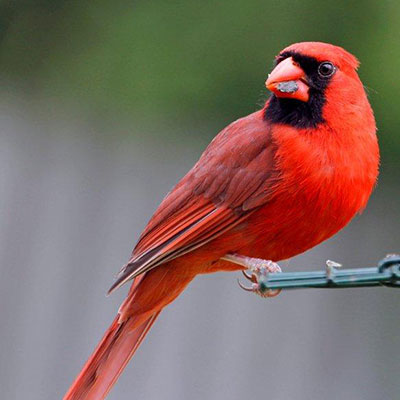
Nevada Plants for Wildlife Habitat & Conservation Landscaping
Do you enjoy observing nature…hearing the song of the chickadee…watching hummingbirds fill up on nectar from trumpet vines…listening to the chattering of squirrels…seeing the beauty and grace of a monarch butterfly perched on a milkweed… experiencing the antics of a Mockingbird…the cooing of the Mourning Doves…the swiftness of the Cottontail…and the brilliance of a Cardinal or Baltimore Oriole?
If the answer is “yes”, you’ll probably want to landscape your property for wildlife so you can experience even more from Mother Nature by attracting more wildlife to your property.
Wildlife doesn’t just randomly appear in a given area. It is there because of favorable habitat. The essential elements that you must provide in your habitat are food, water, cover and a place to raise a family. To attract the most wildlife, you need native trees, shrubs, groundcover, vines and wildflowers, many of which will provide food and shelter.
Native or indigenous plants naturally occur in the region in which they evolved. They are adapted to local soil, rainfall and temperature conditions, and have developed natural defenses to many insects and diseases. Because of these traits, native plants will grow with minimal use of water, fertilizers and pesticides. Wildlife species evolve with plants; therefore, they use native plant communities as their habitat. Using native plants helps preserve the balance and beauty of natural ecosystems.
Remember the function served by plants and structures is more important than their appearance. In other words, don’t base your planting decisions solely on what a plant looks like. Following are WindStar Wildlife Institute’s plant recommendations for wildlife habitats in Nevada:
Trees
River Birch; Eastern Hemlock; Eastern White, Jack and Virginia Pine; Eastern Red and Northern White Cedar; Bald Cypress; Green and White Ash; American Beech; Blackgum; Black Cherry; Shellbark and Shagbark Hickory; Hackberry; Black, Bur, Chinquapin, Pin, Red, Scarlet, Swamp Chestnut, Swamp White and White Oak; Pecan; Persimmon; American Sweetgum; American Sycamore; Tuliptree; and Black Walnut

When you go bird watching in Nevada, Cardinal birds are commonly seen.
Shrubs
Serviceberry, Elderberry, Blackhaw; Floweing, Rough Leaved, Gray, Red-osier and Silky Dogwood; Chokecherry, Nannyberry, Redbud, Shining, Smooth and Staghorn Sumac; Arrowwood; buttonbush; Black Chokeberry; Hazelnut; Ninebark; Wild Plum; Spicebush; and Winterberry
Wildflowers
Blanket Flower; Scarlet Globe Mallow; Sand Dock; Velvetweed; Alpine Wallflower; Scarlet Gaura; Filaree; Shooting Star; Wild Rose; Wax Currant; Evening Primrose; Golden Currant; Golden Banner; Ground Cherry; Prickly Gilia; Prickly Pear; Yellow Violet; Rocky Mountain Bee Plant; Gayfeather; Pasque Flower; Purple Prairie Clover
Grasses
Big and Little Bluestem; Indiangrass; Switchgrass; Hairy Dropseed; Sideouts Grama; Tufted Hairgrass; Woodrush; Indian Ricegrass
The Nevada landscape is represented by sandy deserts, rugged, snow covered mountains, forested mountain slopes and grassy valleys. Located almost entirely within the Great Basin. Nevada can be divided into three main land regions; the Columbia Plateau, the Sierra Nevada, and the Basin and Range Region. In the northeaster corner of Nevada, the land is supported by lava bedrock. Rivers and streams have cut deeply into the bedrock, leaving deep canyons with steep ridges. Near the Idaho border the land turns to open prairie. This is part of the Columbia Plateau. The Sierra Nevada is the rugged mountain range that cuts across a portion of Nevada south of Carson City. Lake Tahoe, a beautiful glacial lake, on the California/Nevada border lies in one of the valleys of the Sierra Nevada. The rest of the state is part of the Basin and Range Region. This region is divided by more than 150 mountain ranges running from north to south. Scattered between all of the ranges are buttes (single lone hills) and mesas (flat-topped mountains) as well as flat valleys with lakes or alkalie flats. The Mohave Native Plant Society can provide lists of plants for a specific region.
For more information on improving your wildlife habitat, visit the WindStar Wildlife Institute web site. On the web site, you can also apply to certify your property as a wildlife habitat, register for the “Certified Wildlife Habitat Naturalist e-Learning course, become a member and sign up for the FREE WindStar Wildlife Garden Weekly e-mail newsletter.

